- About us»
- Net income calculator»
- Population aging»
-
- Least developed regions»
-
- Average wage
- Material need benefits
- Meal allowance
- Counties of Slovakia
- Inflation
- Living and Subsistence Minimum
- Unemployment of Czechia and Slovakia
- NACE Classification
-
- Life expectancy
- Gender differences
- Youth unemployment and NEET
- Minimum wage in EU
- Unemployment rates of different age groups
- Share of salaries on GDP
- Unemployment rate
- Employment rate
- Long term unemployment
- NEET
- Percentage of employees ususally working at nights
-
- Bratislava and surroundings
- Kopanice
- Danube river
- lower Vah river
- middle Vár river
- upper Nitra river
- lower Nitra river
- Mining cities
- Kysuce a Orava
- upper Vah river - Liptov
- Spiš cities
- upper Hron river
- Juhoslovenská kotlina
- Košice fold and Torysa river
- upper Zemplín
- lower Zemplín
- EU regions
- NUTS3 regions of Slovakia
- LAU1 dataset
-
- Projects and activities
- Inclusive growth»
- Good work
- Project SKRS
- Social system – reality and vision
-
- Education of unemployed
- Young unemployed not taking part in education
- Proposal to change the system of education funding
- Library
- News»
- Contact
Lorraine – FRF3
EU regions: France > Grand Est > Lorraine
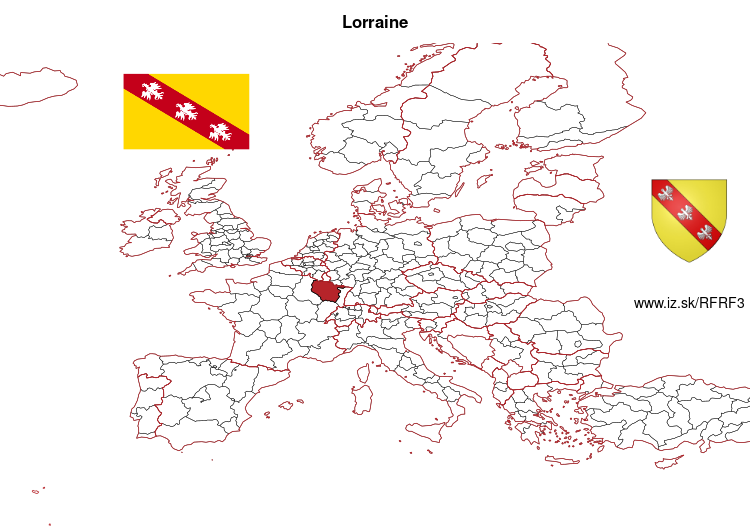
| Indicator | Period | Value |
|---|---|---|
| Life long learning | ||
| life long learning participation | 2024 | 12.2 |
| Part time jobs and flexible employment | ||
| percentage of part time workers | 2024 | 18.99 |
| percentage of part time workers, men | 2024 | 8.47 |
| percentage of part time workers, women | 2024 | 30.24 |
| Gender differences | ||
| gender gap in employment rate | 2024 | 92.81 |
| gender gap in unemployment rate | 2024 | 97.67 |
| Graduates and young people | ||
| unemployment rate of youth with elementary education | 2024 | 43.4 |
| NEET | 2024 | 16.8 |
| Gross domestic product | ||
| GDP per capita in PPS of EU average | 2023 | 71 |
| Employment | ||
| employment rate | 2024 | 67 |
More on wikipedia wikidata Q1137 on OpenStreetMap Lorraine slovensky: FRF3
Subregions: Meurthe-et-Moselle, Meuse, Moselle, Vosges
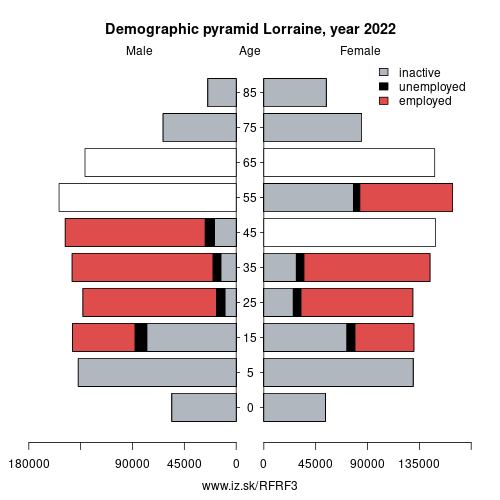
Unemployment
| Indicator | Period | Value |
|---|---|---|
| Unemployment | ||
| unemployment rate | 2024 | 8.6 |
| youth unemployment rate | 2024 | 26.3 |
| Long term unemployment | ||
| long term unemployment | 2024 | 2.2 |
| share of long term unemployed | 2024 | 25.4 |
Demographics
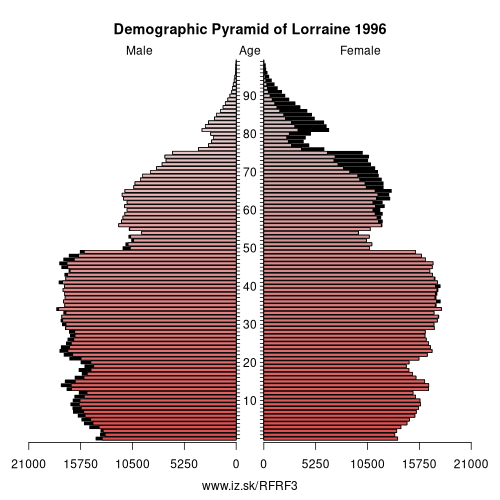
| Indicator | Period | Value |
|---|---|---|
| Demographics | ||
| number of inhabitants | 2024 | 2 314 076 |
| population density | 2023 | 98.5 |
| old-age dependency ratio | 2024 | 36.2 |
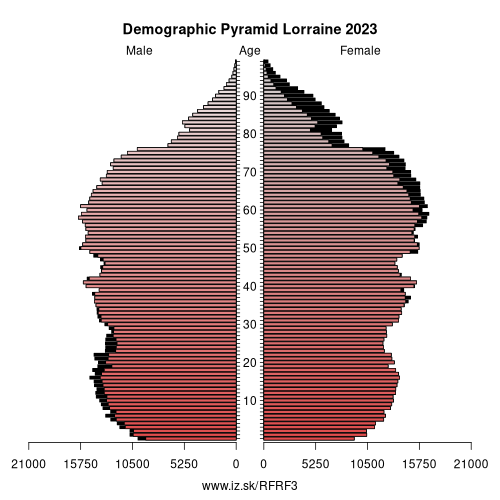
Employment by sectors, Lorraine
| NACE r2 | % | NACE r2 | % | ||
|---|---|---|---|---|---|
| A | 13.4 | 1% | B-E | 177.8 | 19% |
| F | 56.6 | 6% | G-I | 207.8 | 22% |
| J | 13.9 | 1% | K | 27.2 | 3% |
| L | 8 | 1% | M_N | 82 | 9% |
| NRP | 15.7 | 2% | O-Q | 303.4 | 32% |
| R-U | 42.1 | 4% | TOTAL | 948 | 100% |
Data for the period year 2024. Source of the data is Eurostat, table [lfst_r_lfe2en2].
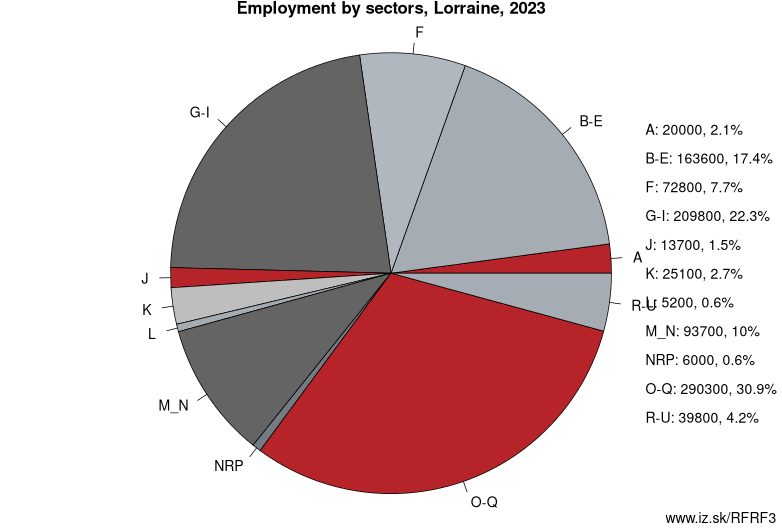
From Wikipedia: Lorraine is a cultural and historical region in north-eastern France, now located in the administrative region of Grand Est. Lorraine's name stems from the medieval kingdom of Lotharingia, which in turn was named for either Emperor Lothair I or King Lothair II. It later was ruled as the Duchy of Lorraine before the Kingdom of France annexed it in 1766.
From 1982 until January 2016, Lorraine was an administrative region of France. In 2016, under a reorganization, it became part of the new region Grand Est. As a region in modern France, Lorraine consisted of the four departments Meurthe-et-Moselle, Meuse, Moselle and Vosges (of an historical point of view the Haute-Marne department is located in the region), containing 2,337 communes. Metz is the regional prefecture. The largest metropolitan area of Lorraine is Nancy, which had developed for centuries as the seat of the duchy.
Lorraine borders Germany, Belgium, and Luxembourg. Its inhabitants are called "Lorrains" in French and number about 2,356,000.
History
Lorraine's borders have changed often in its long history.
Other: Grand Est, Champagne-Ardenne, Lorraine, Vertonne
Neighbours: Franche-Comté, Luxembourg, Champagne-Ardenne, Vertonne, Rheinhessen-Pfalz, Luxembourg, Saarland
Subregions: Meurthe-et-Moselle, Meuse, Moselle, Vosges
Suggested citation: Michal Páleník: Europe and its regions in numbers - Lorraine – FRF3, IZ Bratislava, retrieved from: https://www.iz.sk/PFRF3, ISBN: 978-80-970204-9-1, DOI:10.5281/zenodo.10200164

 Share
Share Facebook
Facebook Twitter
Twitter News
News